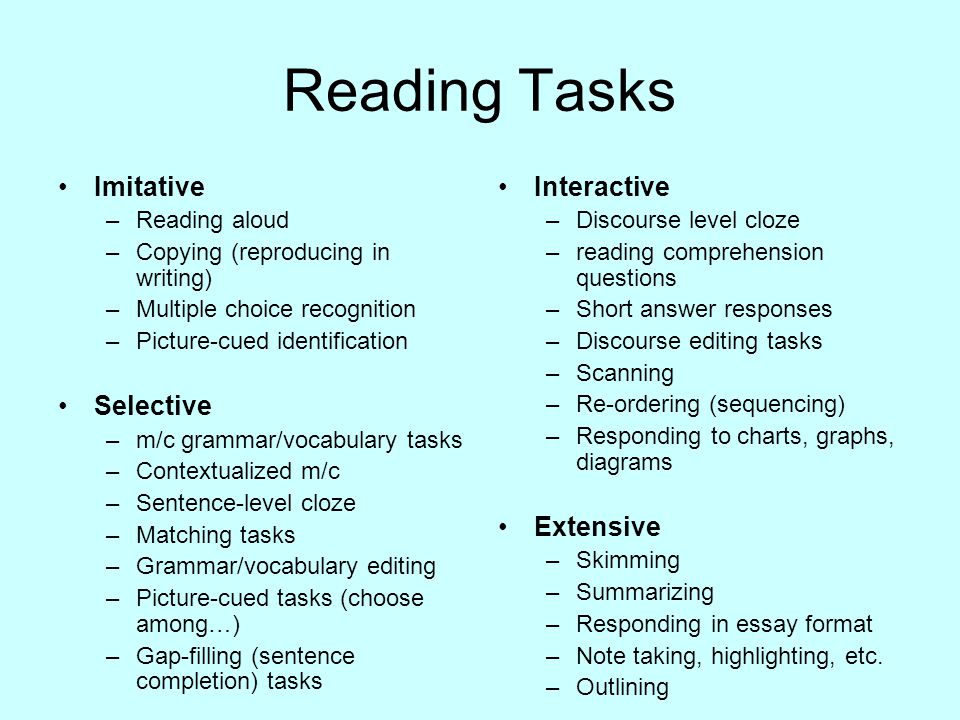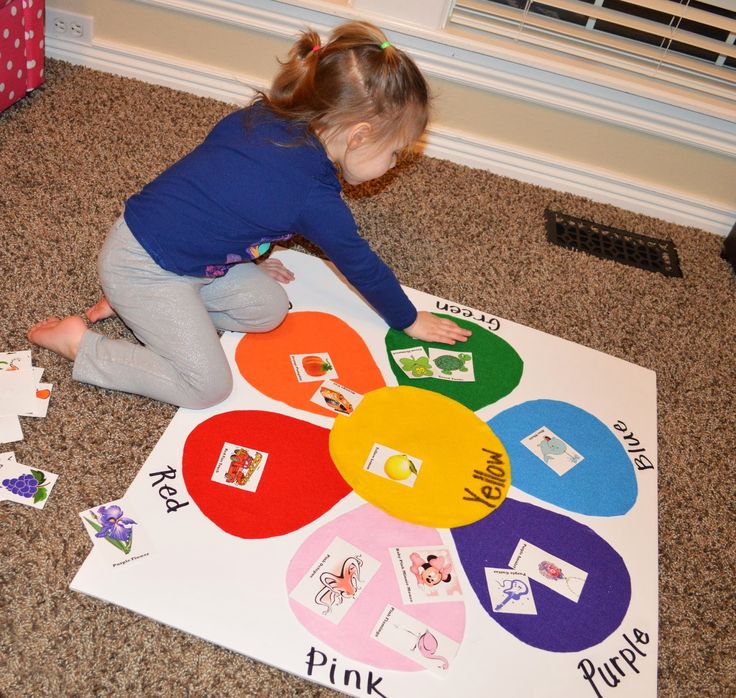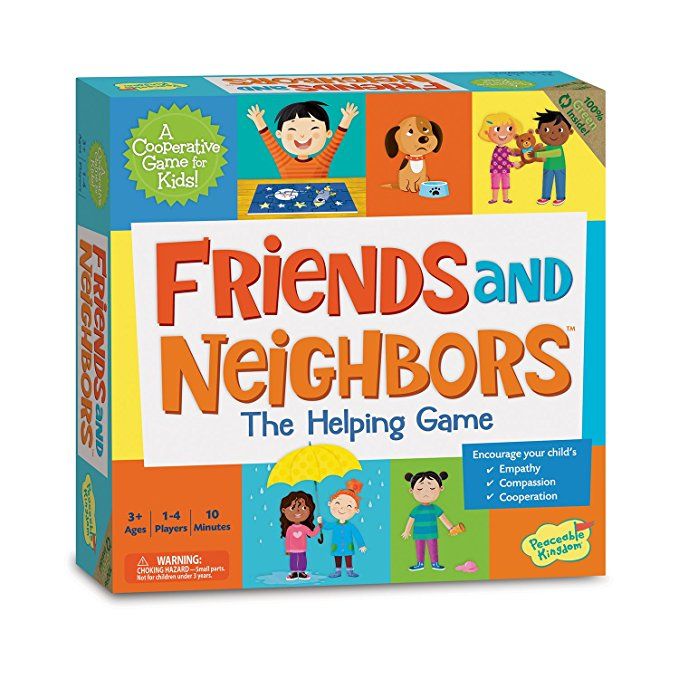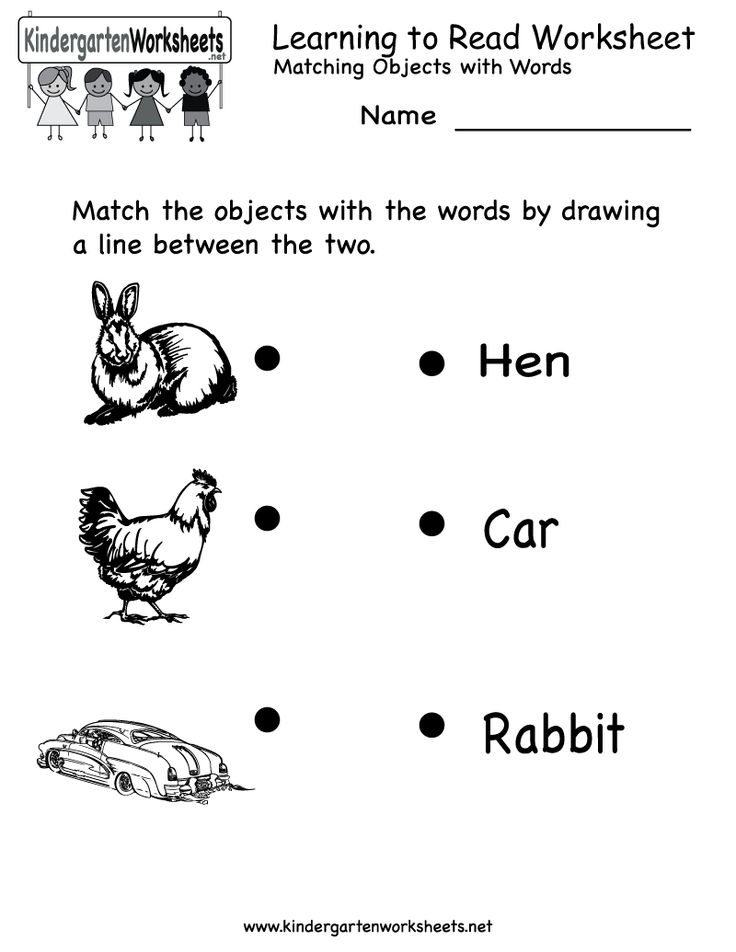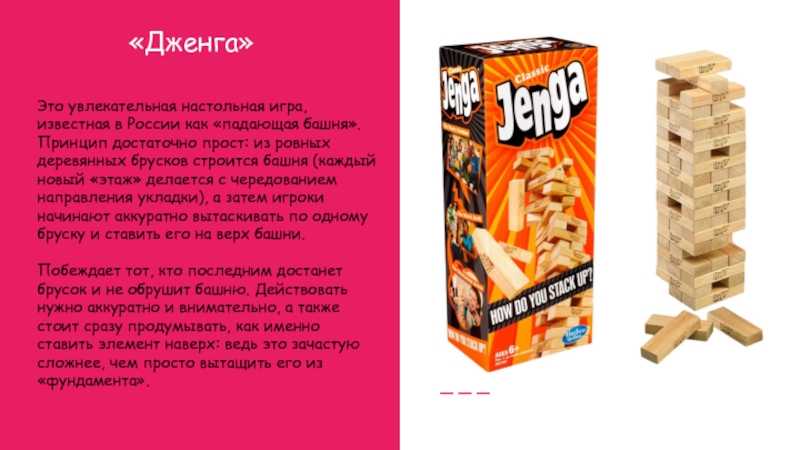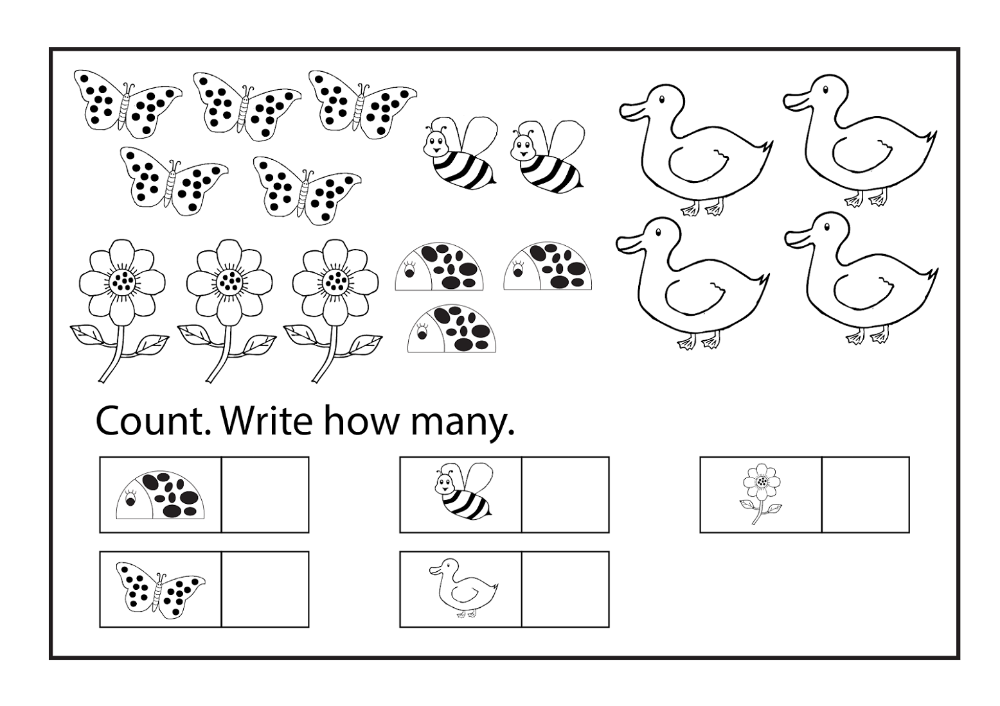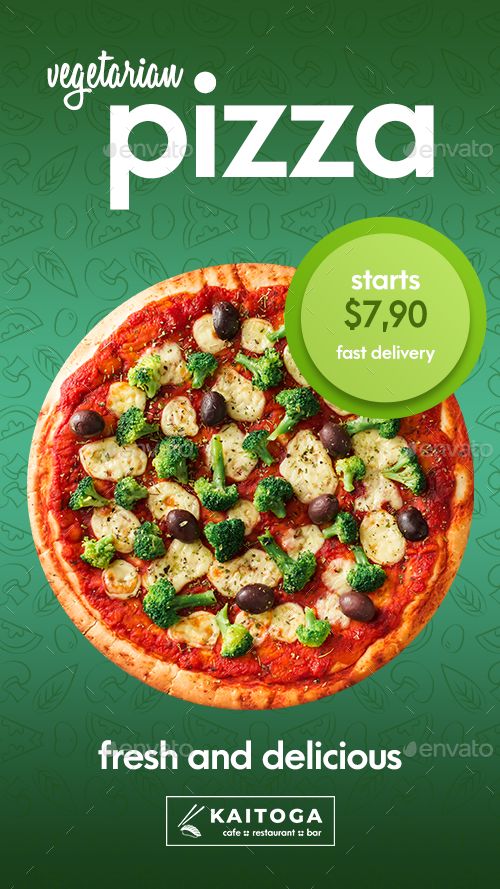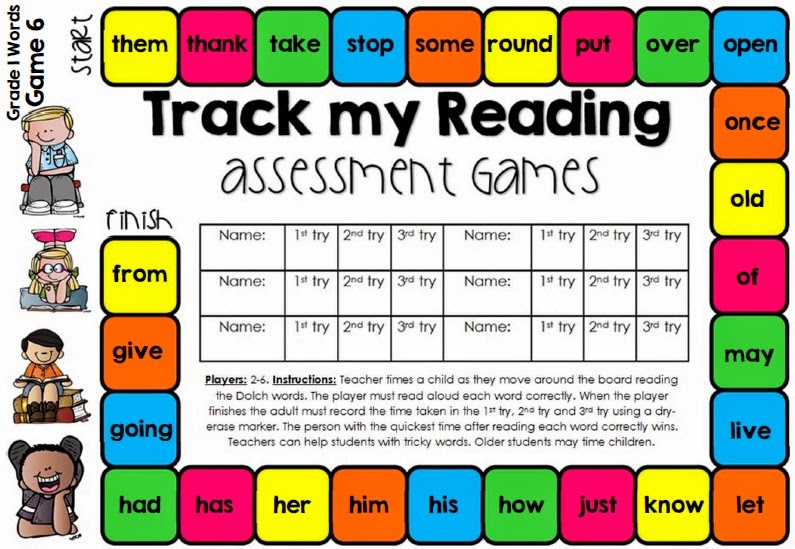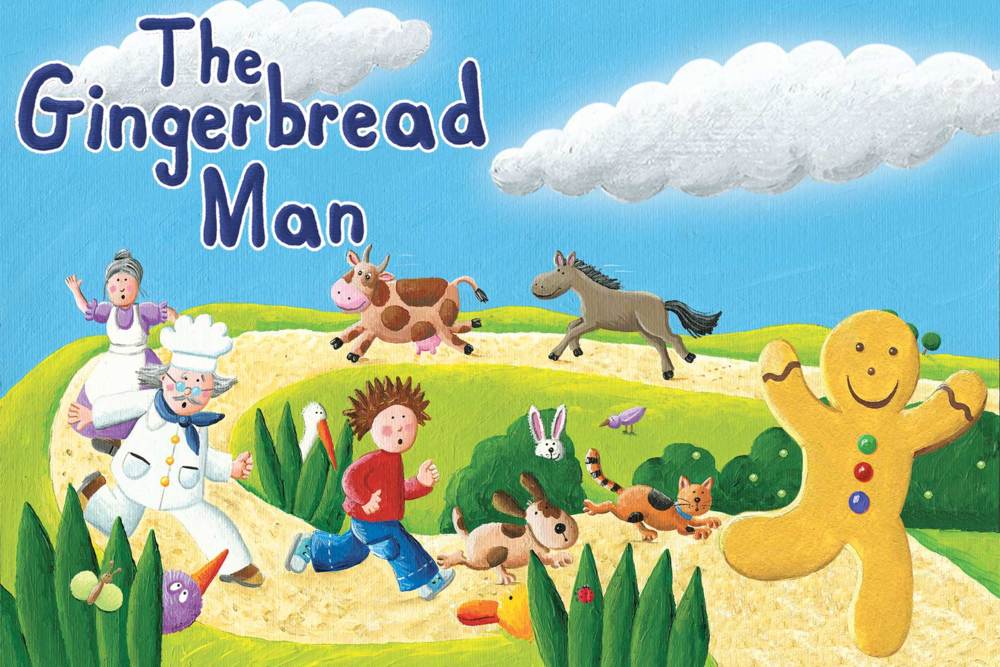Sight word practice
48 Fun Sight Word Activities That Work
Teachers are always on the hunt for great sight word activities. Sight words are any words readers recognize automatically “by sight”—for fluent readers, that’s almost all words! High-frequency words, the most commonly occurring words in written English like those on the Dolch list, are often thought of as the most crucial sight words.
It’s a myth that blindly memorizing every letter in a sight word is the only way to learn it. The science of reading tells us that linking sounds and letters is the most effective way for kids’ brains to learn any word. Many common words are easy to tackle using beginning phonics skills (like “at,” “can,” “him,” etc.), so staying true to a strong phonics curriculum is one way to support kids’ sight word learning. Even irregularly spelled words have decodable parts, e.g., kids can use the sounds of “s” and “d” to help with “said,” even if the “ai” is unexpected. Experts often call these words “heart words” to call out for kids that they should learn the unexpected word parts “by heart.
” (If all this is unfamiliar to you, it can feel overwhelming, but you’ve got this! Check out teaching guru Jillian Starr’s explanation for more help.)
Check out these low-prep and engaging sight word activities for both teaching and practicing words.
1. Map it and drive it
This is a genius way to introduce words with appealing materials: Say the word, represent each sound with a LEGO brick, write letters for each sound, and “drive” to read it.
Source: @droppinknowledgewithheidi
2. Smush play dough for each sound
Set up a routine that works for any word. Play dough squishing for each sound is the ultimate multi-sensory component.
Source: @playdough3plato
3. Map words with a magnet wand
It is so super-satisfying to drag those magnetic dots around! Watch the video below for lots of tips on introducing a word using this process.
Source: @warriorsforliteracy
4. Make a mini book
Lots of handy info in one place for your little learners.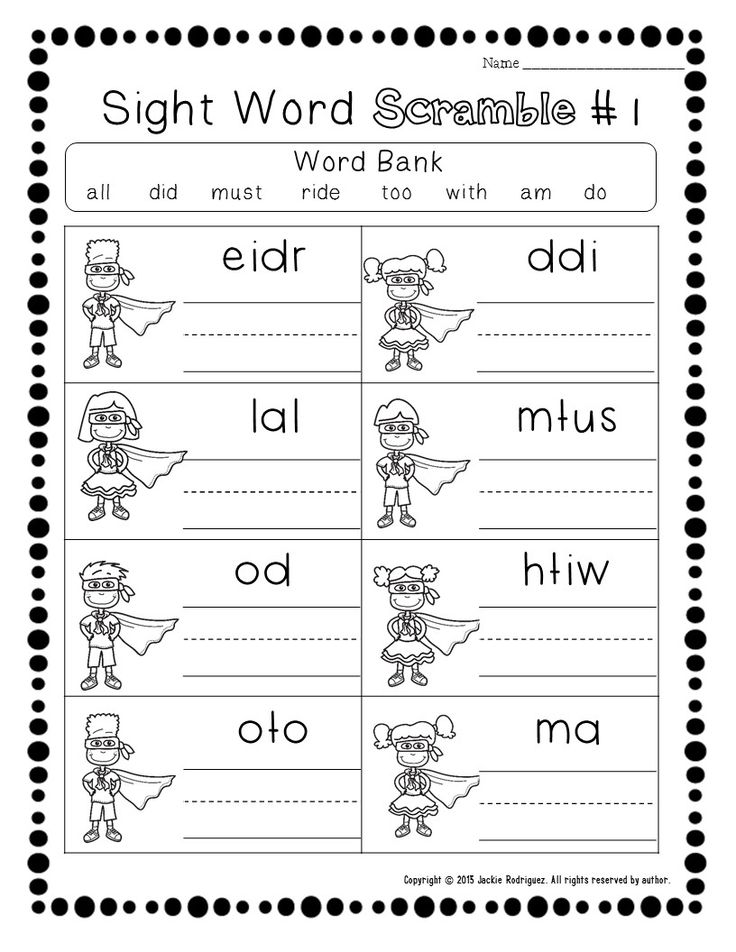
Source: @hughesheartforfirst
5. Tap it, pop it, learn it!
Hardwire those words in kids’ brains with this comprehensive word intro routine. (You had us with the pop its!)
Source: @hellojenjones
6. Find and swat words
An oldie but such a goodie. Find a word in an array and WHACK! Swat it with a fly swatter!
Source: @kids_play_learn_laugh
7. Flip word pancakes
Serve up sight word pancakes while practicing spelling them aloud.
Source: @bee_happy_teaching
8. Wear heart word bracelets
Make kids feel like sight word VIPs.
Source: @teachingmoore
9. Search for sight word balls
Write sight words on ball pit balls with a chalk marker or dry-erase marker. Kids can race around hunting for balls to read and toss in a basket, or hunt through a big tub of balls for a certain word.
Source: @preschoolforyou
10. Start a sight word band
Loud but oh-so-fun! Feel the rhythm while tapping and reading sight words stuck to homemade percussion instruments.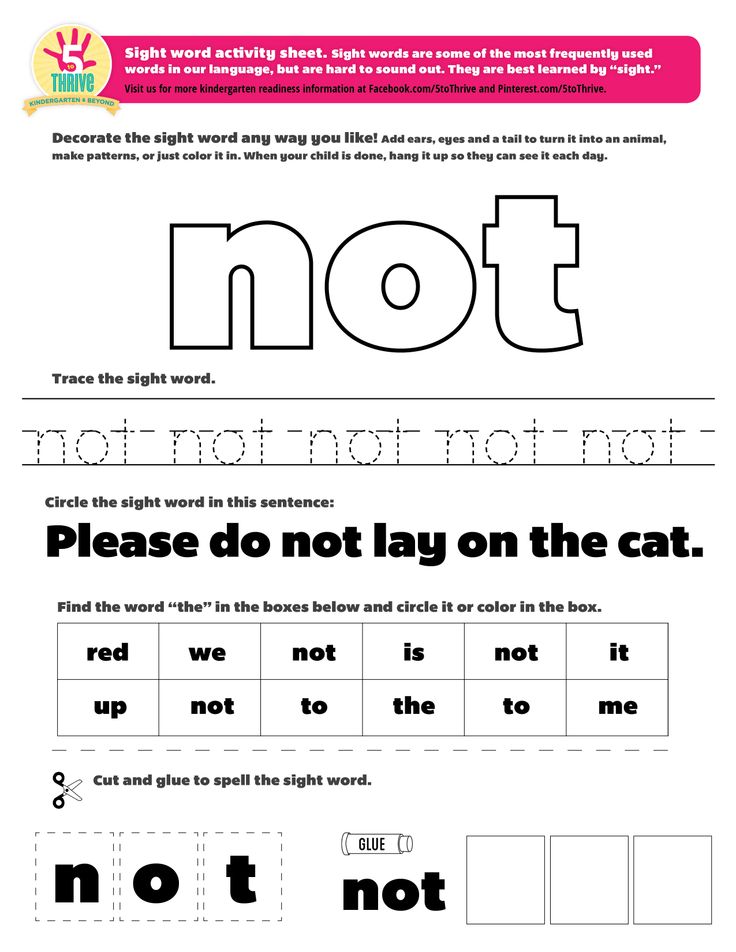
Source: @earlyyears_withmrsg
11. Drive on a sight word path
This is one of many fun ways to use magnetic tiles for learning! Kids love “knocking down” word tiles with a toy car as they read each one.
Source: @travisntyler
12. Use sticky notes to inspire sight word sentences
Have kids stick words on items that give them ideas for sentences. “My Mom said to wear a helmet!” = so good!
Source: @kinneypodlearning
13. Write words on a sensory bag
So easy: Fill a zip-top bag with a small amount of kid-safe paint, seal well, and have kids practice “writing” sight words with their finger or a cotton swab.
Source: @makeitmultisensory
14. Wear a sight word crown
Wear your word proudly and practice reading others’ words. Fun in person or virtually.
Source: @mrsjonescreationstation
15. Play a magnetic-tile board game
We love new ideas for ways to use magnetic tiles for sight word activities.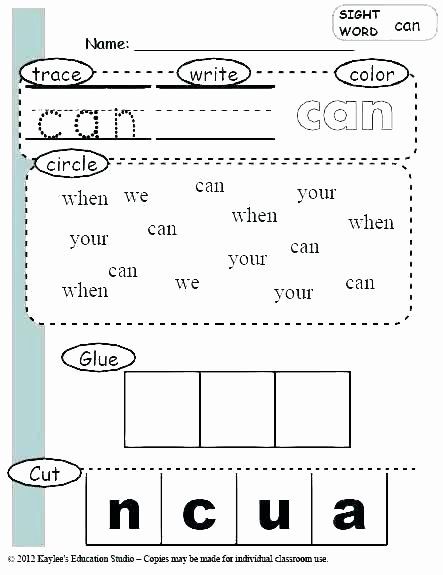 Easy to set up and fun to play.
Easy to set up and fun to play.
Source: @twotolove_bairantwins
16. Spell words to a familiar tune
Get sight words stuck in everyone’s head, in a good way. We’d add a line for chanting the sounds in the word!
Source: @saysbre
17. Feed a word monster
Nom, nom, nom.
Source: @ecplayandlearn
18. Search for the pom-pom under sight word cups
Read all the words as you try to find the cup that hides the prize.
Source: @la.la.learning
19. Play sight word KABOOM
This classroom classic is perfect for sight words. If you need a refresher on the rules, Jillian Starr covers them.
Source: @essentiallykinder
20. Roll and write words
Roll, write, repeat.
Source: @mylittlepandamonium
21. Write words with rainbow colors
Bonus points for aromatic markers.
Source: @mylittlepandamonium
22. Trace words with flashlights
Stock up on batteries because kids never get tired of this!
Source: @giggleswithgerg
23.
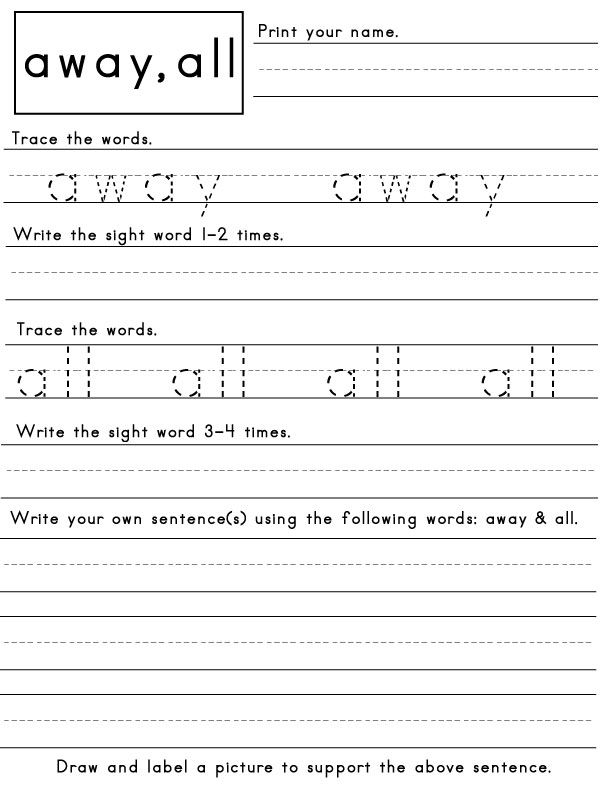 Find words in plastic eggs
Find words in plastic eggsGive kids a checklist of words to find as they open each egg.
Source: @blooming_tots1
24. Spy words around the classroom
Just add a magnifying glass and clipboard to make kids feel like supersleuths!
Source: @readingcorneronline
25. Find words in the morning message
Don’t forget about old standbys! This is one of our favorite ways to get kids to recognize sight words in connected text.
Source: @tales_of_a_kinder_classroom
26. Build words with bricks
Such a great use of extra building bricks!
Source: @raysinkinder
27. Write words in sand
Easy-peasy to set up and keep neat if you use plastic pencil boxes.
Source: @teacherhacks
28. Spell words on a construction site
Bulldozing over each word to read it is the best part!
Source: @planningplaytime
29. Spell words with toy cars
Drive on over!
Source: @lozlovesprep
30.
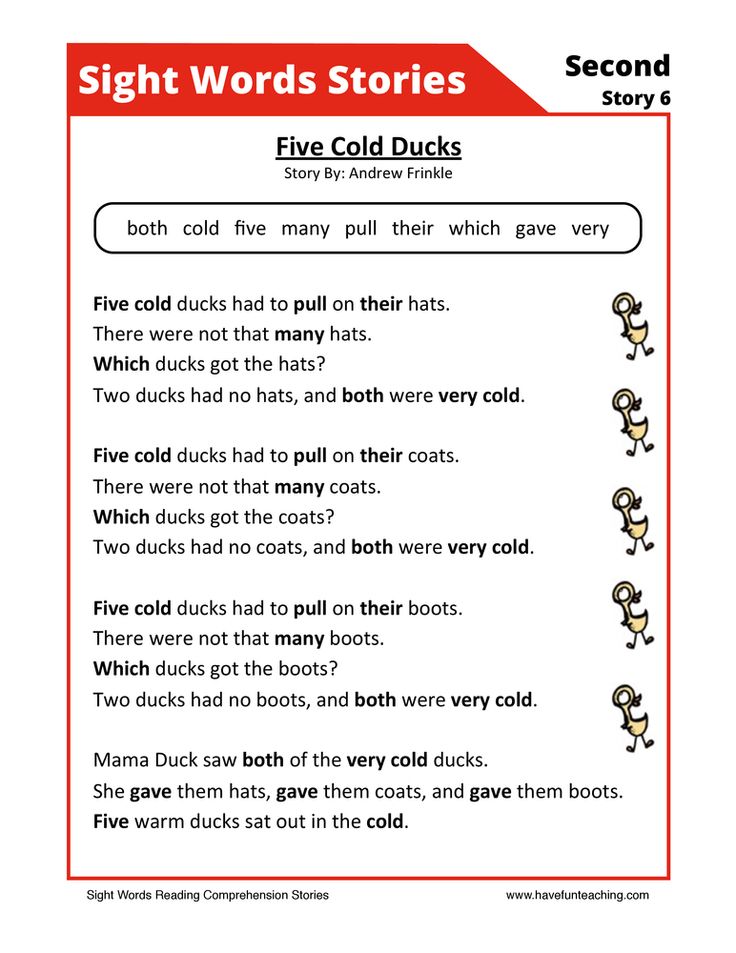 Park in a sight word “parking lot”
Park in a sight word “parking lot”This one is easy to modify based on whatever toys are available in the classroom or at home.
Source: @msbendersclassroom
31. “Plant” words in play dough
Watch those reading skills grow!
Source: @planningplaytime
32. Build words in a sensory tub
Because spelling is just more fun when your hands are covered in beans!
Source: @coffeeandspitup
33. Write words on a magnetic drawing board
That eraser track makes for a perfect word card holder!
Source: @moffattgirls
34. Or write words on the window!
Everyone wants a turn to write on the window!
Source: @kindergarten_matters
35. Shhh! Discover words written in invisible ink
Write words in white crayon and reveal them with watercolors on top!
Source: @teachstarter
36. Dot-paint words with a cotton swab
Calming and effective.
Source: @sightwordactivities
37.
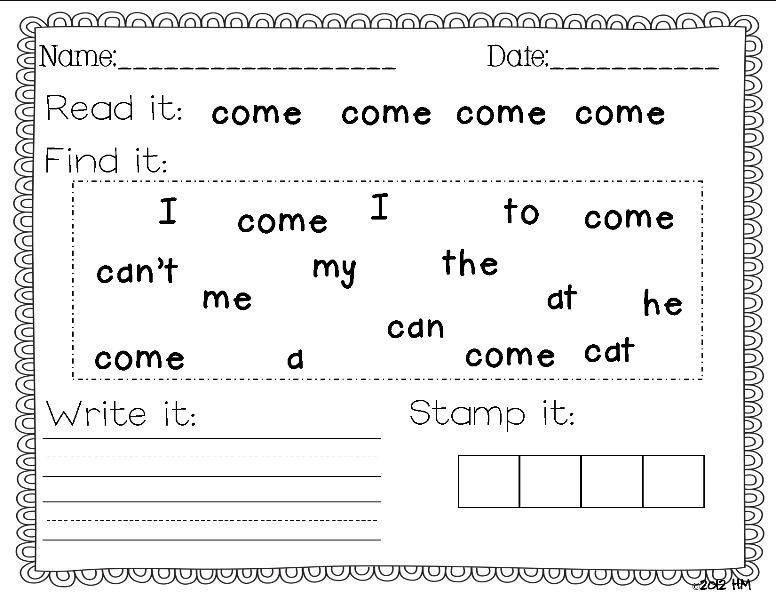 “Type” words on a keyboard
“Type” words on a keyboardBusy day at the sight word office! Use a keyboard cover or any old keyboard.
Source: @lifebetweensummers
38. Read words before heading through the door
The line leader can double as the word pointer during transitions.
Source: @ms.rowekinder
39. Read the word the teacher’s wearing!
Wait, is there something on my shirt?
Source: @theprimarypartner
40. Take a sight word cakewalk
Choose a winning word when the music stops!
Source: @joyfulinkinder
41. Play sight word hopscotch
If you can’t get outdoors, tape on the floor works just as well.
Source: @wheretheliteracygrows
42. Play tic-tac-toe
I’ll be team “the.”
Source: @create_n_teach
43. Go sight word bowling
No bowling pins? Use half-filled plastic water bottles instead.
Source: @thecreativeteacher_
44. Ready, aim, read
Just throw a beanbag at a word target if foam darts are a no-go.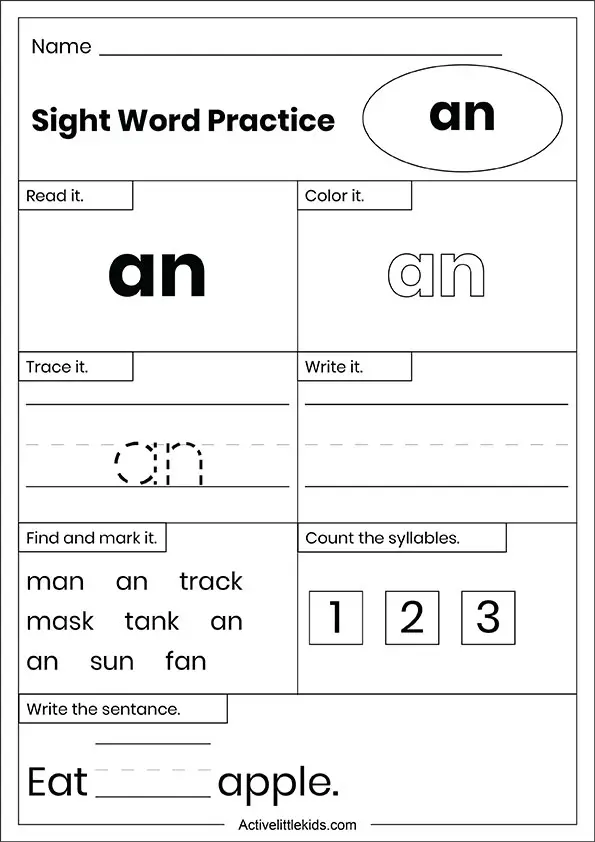
Source: @laurens_lil_learners
45. Play muffin tin ball toss
Toss and read. It’s easy to use colored muffin cups to prep different sets of words.
Source: @homeschooling_fun_with_lynda
46. DIY sentence flash cards
Authentic use of words in context for the win.
Source: @teachertipsandtales
47. Play sight word checkers
King me! If kids don’t have a partner available, they can “play” with a stuffed animal and get double practice.
Source: @sightwordactivities
48. Play sight word Guess Who?
Set up this game once and use it forever.
Source: @lessons_and_lattes
We’d love to hear—what are your favorite sight word activities? Share in the comments below.
Want more articles like this? Be sure to sign up for our newsletters.
Plus, what are sight words?
Teach Your Child to Read
Print your own sight words flash cards. Create a set of Dolch or Fry sight words flash cards, or use your own custom set of words.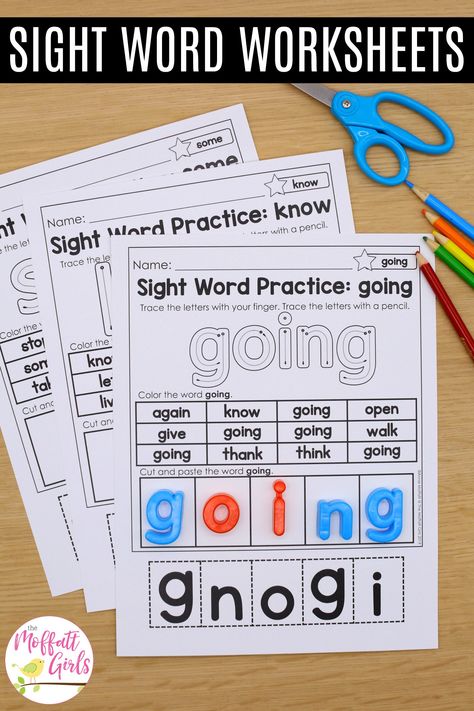
More
Follow the sight words teaching techniques. Learn research-validated and classroom-proven ways to introduce words, reinforce learning, and correct mistakes.
More
Play sight words games. Make games that create fun opportunities for repetition and reinforcement of the lessons.
More
Learn what phonological and phonemic awareness are and why they are the foundations of child literacy. Learn how to teach phonemic awareness to your kids.
More
A sequenced curriculum of over 80 simple activities that take children from beginners to high-level phonemic awareness. Each activity includes everything you need to print and an instructional video.
More
Teach phoneme and letter sounds in a way that makes blending easier and more intuitive. Includes a demonstration video and a handy reference chart.
More
Sightwords.com is a comprehensive sequence of teaching activities, techniques, and materials for one of the building blocks of early child literacy.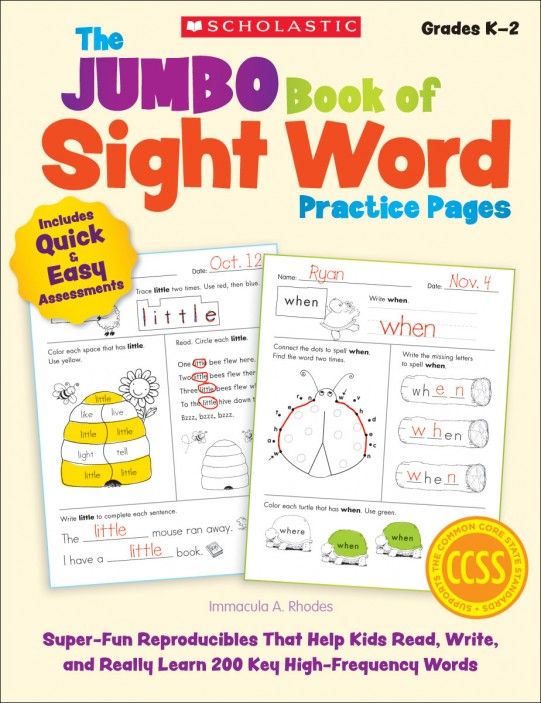 This collection of resources is designed to help teachers, parents, and caregivers teach a child how to read. We combine the latest literacy research with decades of teaching experience to bring you the best methods of instruction to make teaching easier, more effective, and more fun.
This collection of resources is designed to help teachers, parents, and caregivers teach a child how to read. We combine the latest literacy research with decades of teaching experience to bring you the best methods of instruction to make teaching easier, more effective, and more fun.
Sight words build speed and fluency when reading. Accuracy, speed, and fluency in reading increase reading comprehension. The sight words are a collection of words that a child should learn to recognize without sounding out the letters. The sight words are both common, frequently used words and foundational words that a child can use to build a vocabulary. Combining sight words with phonics instruction increases a child’s speed and fluency in reading.
This website includes a detailed curriculum outline to give you an overview of how the individual lessons fit together. It provides detailed instructions and techniques to show you how to teach the material and how to help a child overcome common roadblocks.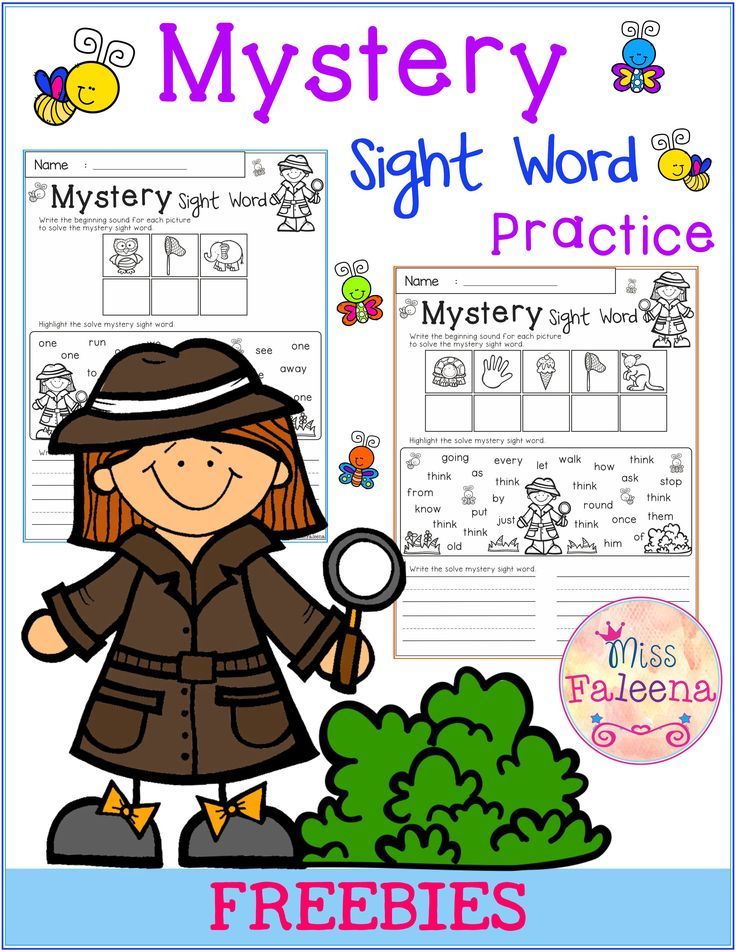 It also includes free teaching aids, games, and other materials that you can download and use with your lessons.
It also includes free teaching aids, games, and other materials that you can download and use with your lessons.
Many of the teaching techniques and games include variations for making the lesson more challenging for advanced students, easier for new or struggling students, and just different for a bit of variety. There are also plenty of opportunities, built into the lessons and games, to observe and assess the child’s retention of the sight words. We encourage you to use these opportunities to check up on the progress of your student and identify weaknesses before they become real problems.
Help us help you. We want this to be a resource that is constantly improving. So please provide us with your feedback, both the good and the bad. We want to know which lessons worked for your child, and which fell short. We encourage you to contribute your own ideas that have worked well in the home or classroom. You can communicate with us through email or simply post a response in the comments section of the relevant page.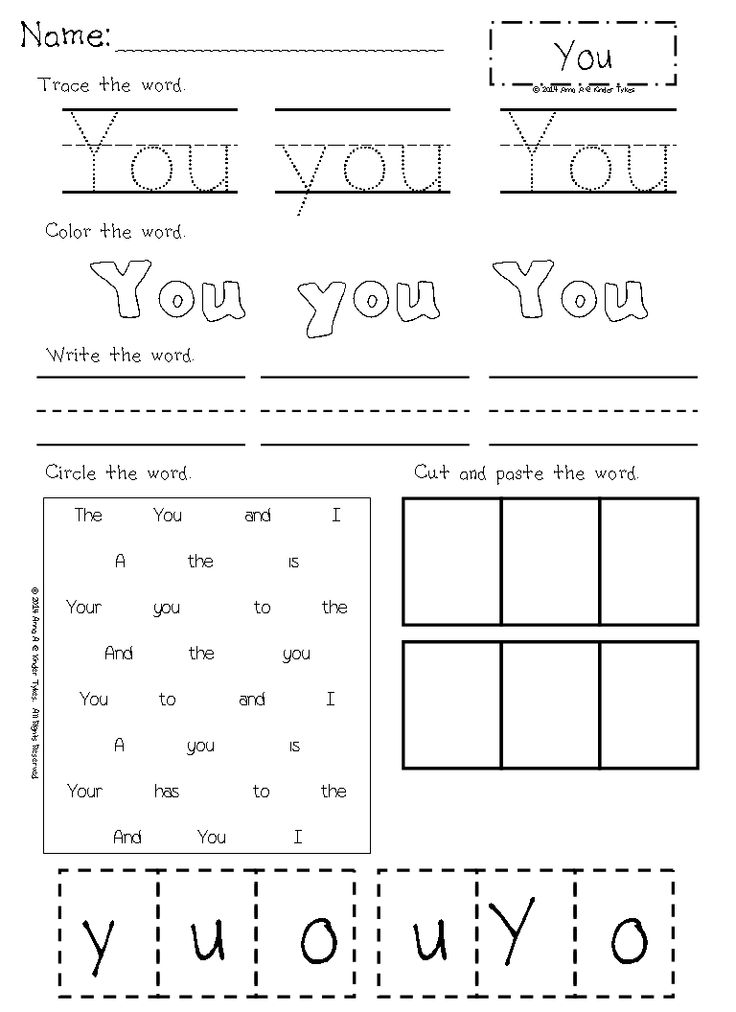
Kalashnikov Club | The basis of a precise shot: rules for aiming
Georgy Gubich, a Kalashnikov specialist in the field of civilian small arms, talks about the rules for using a closed mechanical diopter sight
More than a year ago, the article “Mechanical sights. Types and features ”, where I tried to give information for reflection on what are the fundamental differences between open and closed sights, as well as describe the differences in aiming methods. It turned out that the article, in addition to not convincing everyone, in some cases raised even more questions than it answered, and sometimes even led to outbursts of rage in an attempt to deny the obvious. nine0003
I think this happened due to the fact that, in fact, some readers perceived the analytical material as the rules for aiming with a diopter sight, and even superimposing on it the established aiming technique with an open mechanical sight.
Therefore, in this article I focus on the rules for using mechanical sights - open and diopter.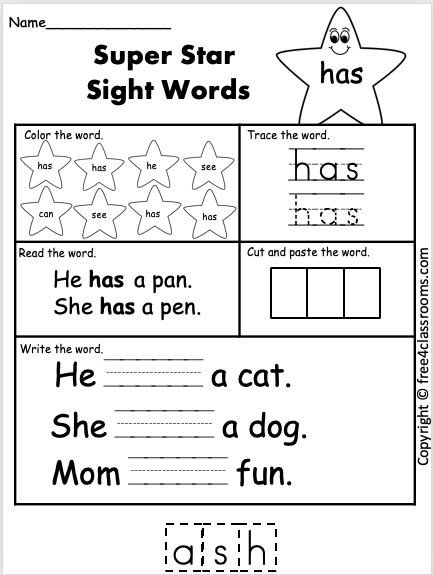 But first, let's turn our attention to the ability to achieve shooting targets by taking the rules for using scopes out of context. nine0003
But first, let's turn our attention to the ability to achieve shooting targets by taking the rules for using scopes out of context. nine0003
I would like to start with quotes from a book that can rightfully be considered the quintessence of Soviet methods of sports shooting - A.A. Yuryev, "Sport Shooting", Moscow, FIS, 1962 (Second edition):
“An indispensable condition for correct aiming should be such an interposition of sighting devices (regardless of the types of sights) in which a “smooth front sight” is maintained.
When aiming with an open sight, a “flat front sight” will be such a visible arrangement of sighting devices in which the front sight falls in the middle of the sight slot, and the top of the front sight is flush with the upper edges of the slot. nine0014
“When aiming with a diopter sight with a “flat front sight”, the top of the rectangular front sight (or the center of the hole of the ring front sight) will be aligned with the center of the diopter hole.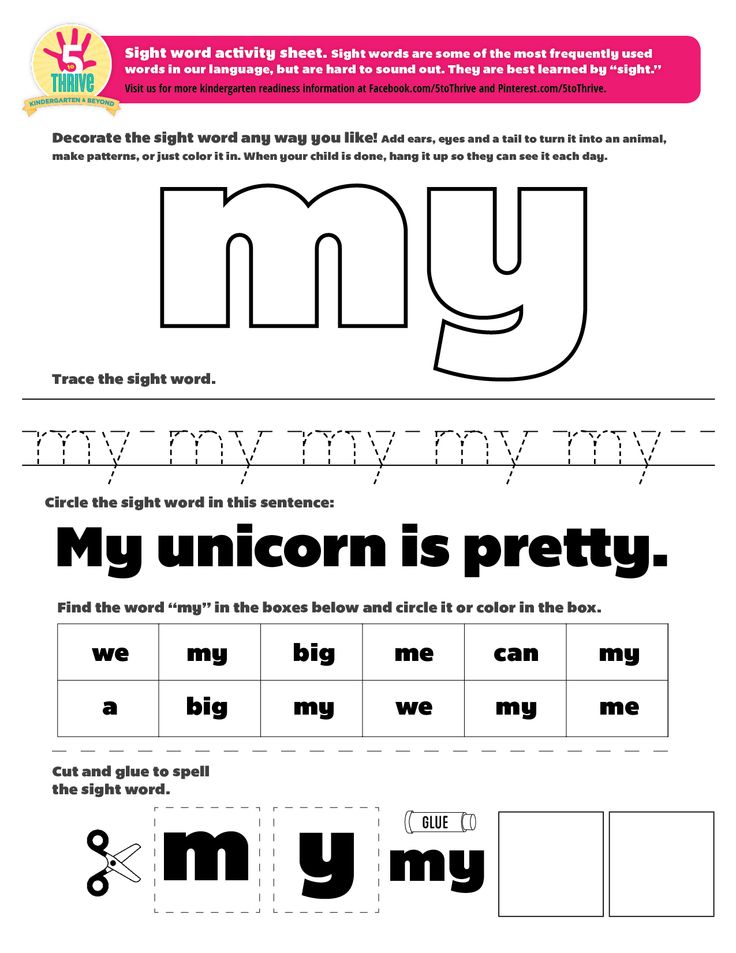 ”
”
Thus, the “flat front sight” for an open sight is the top of the front sight at the same level as the top of the rear sight, the side gaps (if any) are the same size, and the “flat front sight” for a diopter sight is the top of the front sight in the center of the diopter hole.
For open sights:
1. Front sight in the middle of the slot
2. The top of the front sight is at the level of the mane of the rear sight
The figures presented in this article are schematic and not capable of conveying the full picture, but will help you visualize the main theses of the article.
For diopter sight:
1. The top of the front sight is in the center of the rear sight hole
Separately, it is worth focusing on the fact that in the case of a diopter sight, we are talking about the top of the front sight, and not its other part (middle, 2/3, etc.). Perhaps you yourself have encountered similar manifestations in your practice:
From the point of view of directly building the correct sighting line, you can aim not with the top of the front sight, but, for example, with its base or protection, and, subject to the condition of uniformity, such options will also work.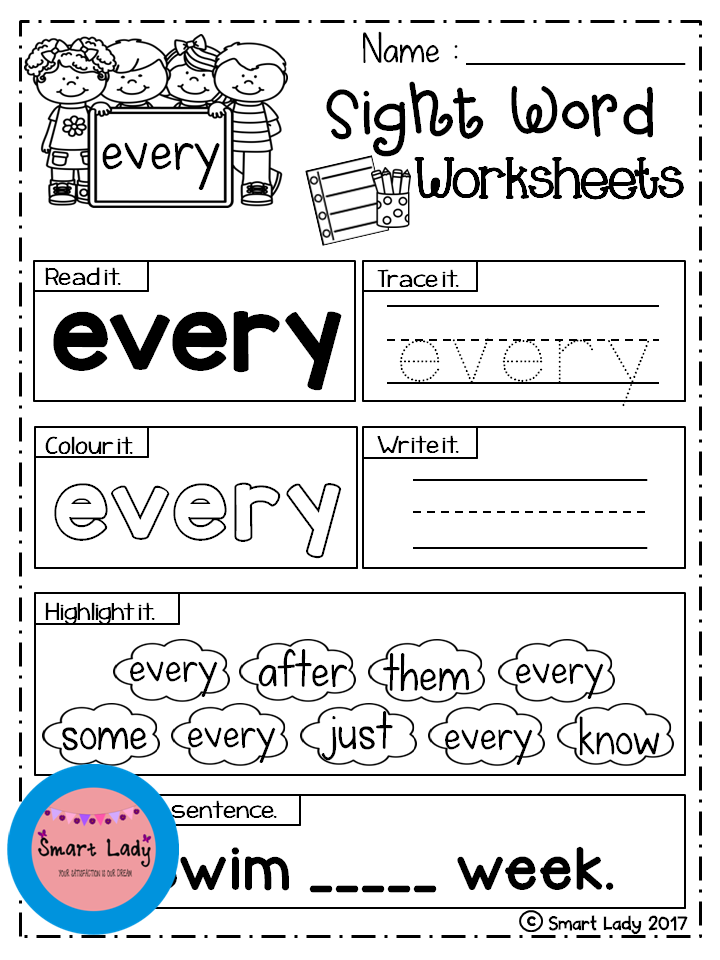 But there is no need to talk about ease of use. We must not forget about the different types of flies, types of protection and the position of the flies relative to the protection (because the vertical displacement of the STP when bringing the weapon to normal combat is often carried out by screwing in or twisting the front sight), and getting used to centering relative to the diopter hole, for example, a round front sight , you can run into a problem when picking up a weapon that does not have a trigger. nine0003
But there is no need to talk about ease of use. We must not forget about the different types of flies, types of protection and the position of the flies relative to the protection (because the vertical displacement of the STP when bringing the weapon to normal combat is often carried out by screwing in or twisting the front sight), and getting used to centering relative to the diopter hole, for example, a round front sight , you can run into a problem when picking up a weapon that does not have a trigger. nine0003
Regardless of the conditions, the position of the top of the front sight in the center of the diopter is optimal.
Again we return to quotes from the book of A.A. Yuryev "Sport Shooting" (Second Edition, Moscow, FiS, 1962):
“Thus, the accuracy of aiming depends on the ability of the shooter to always keep the “smooth front sight” in the same way and combine its top with the lower edge of the “apple” of the target (with the aiming point).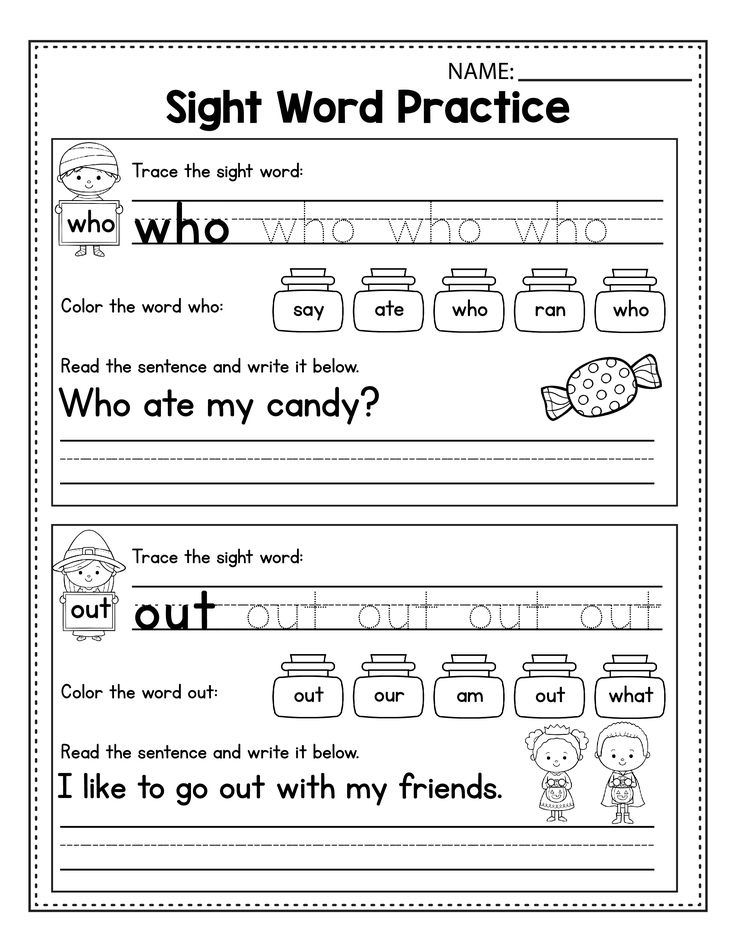
At first glance, the aiming scheme outlined above seems simple and understandable. But when the shooter wants to put it into practice, he will face many difficulties during shooting.
The main practical difficulties that arise in front of the shooter during aiming are due to the peculiarities of the structure of the eye and its work as an optical apparatus in the process of aiming. nine0014
“... the eye cannot simultaneously clearly see objects that are at different distances from it, in this case, the slot of the sight, the front sight and the “apple” of the target. So, if you clearly see the front sight, then the target and the slot of the sight will be perceived by the eye as blurry; if you focus your vision on the target, the front sight and the slot of the sight will be blurry. Some shooters, while aiming when firing from a rifle, “run across” their gaze from the front sight to the slot, then to the third object - the target, doing this quickly and several times until they combine all three points on one straight line.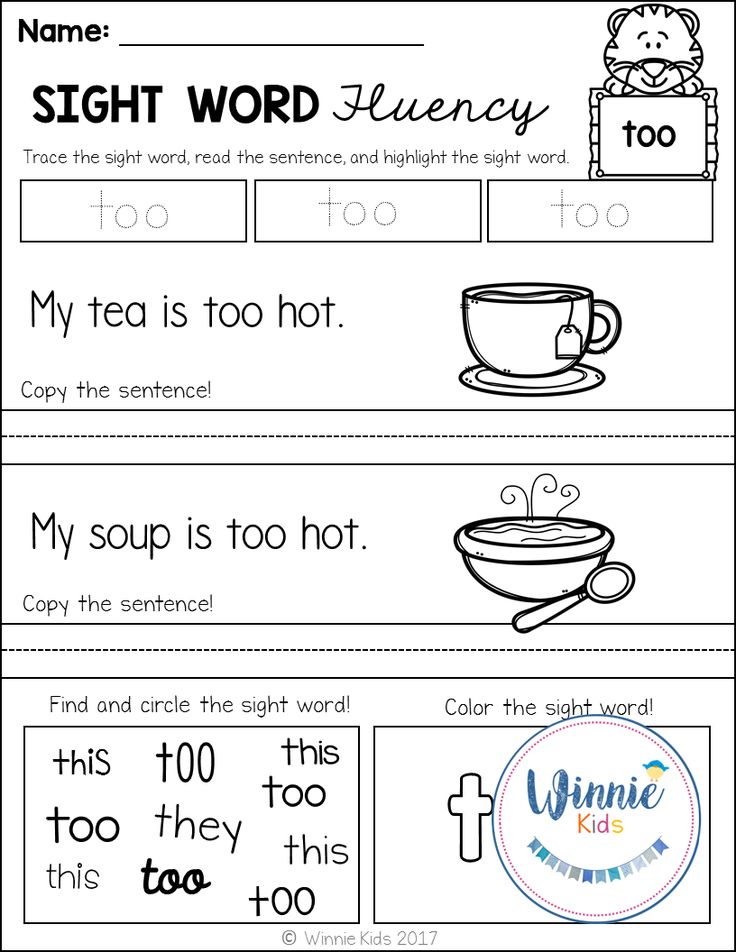 This method of aiming causes rapid fatigue of the muscular apparatus of the eye and can be used in the initial form of learning to aim, and then only at first. With this method of aiming, it is very difficult for the shooter to conduct, for example, high-speed shooting when it is limited by time. The same applies to standing shooting, when the athlete does not have the opportunity to pay much attention to aligning and refining the position of the front sight in the slot. Therefore, while aiming when shooting from a rifle, the shooter must sacrifice something and strive to clearly, sharply see only one of three objects: either the front sight, or the slot, or the target. nine0014
This method of aiming causes rapid fatigue of the muscular apparatus of the eye and can be used in the initial form of learning to aim, and then only at first. With this method of aiming, it is very difficult for the shooter to conduct, for example, high-speed shooting when it is limited by time. The same applies to standing shooting, when the athlete does not have the opportunity to pay much attention to aligning and refining the position of the front sight in the slot. Therefore, while aiming when shooting from a rifle, the shooter must sacrifice something and strive to clearly, sharply see only one of three objects: either the front sight, or the slot, or the target. nine0014
Based on practice, the vast majority of shooters, when shooting from a rifle, try to see the front sight sharply, being forced to somewhat neglect the sharpness of the image and the cut of the sight and the “apple” of the target.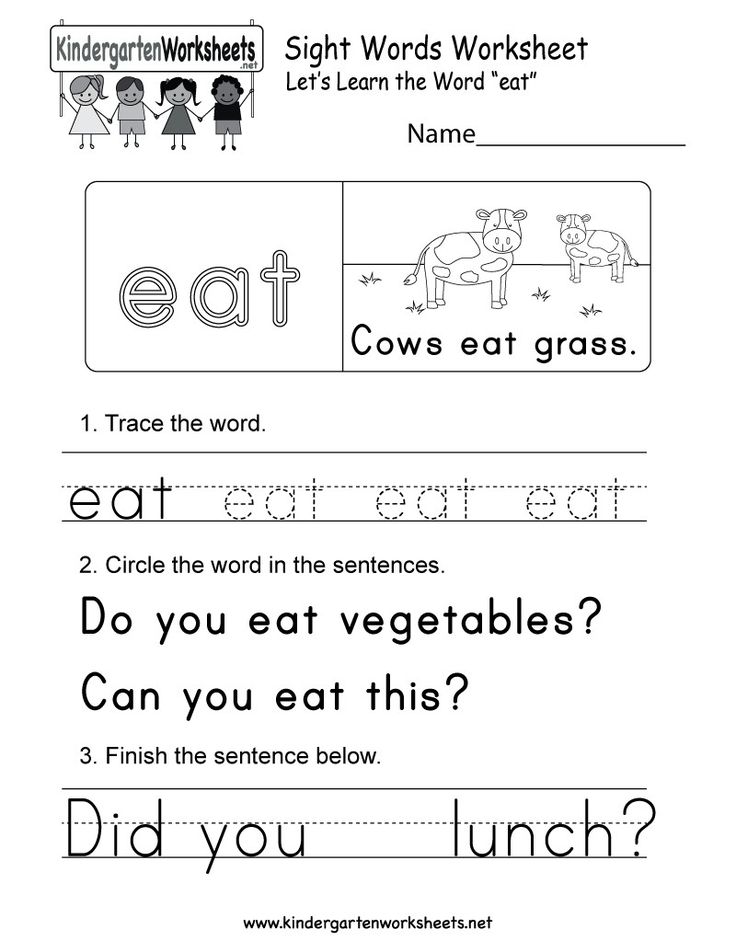 At the same time, one should not be embarrassed by the fact that the sight slot is perceived as fuzzy and, as it were, doubled ... "
At the same time, one should not be embarrassed by the fact that the sight slot is perceived as fuzzy and, as it were, doubled ... "
At first glance, everything is quite simple, obvious and has long been known. Almost the same thing can be seen in the manual on shooting (NSD), for example:
"119. To aim, you need to close your left eye, and look with your right eye through the slot of the sight at the front sight so that the front sight falls in the middle of the slot, and its top is on a par with the upper edges of the mane of the aiming bar, i.e., take an even front sight.
© Guide to the 5.45 mm Kalashnikov assault rifle (AK74, AKS74, AK74N, AKS74N) and 5.45 mm Kalashnikov light machine gun (RPK74, RPKS74, RPK74N, RPKS74N). Moscow: Military publishing house of the Ministry of Defense of the USSR, 1976.
We level the front sight vertically and horizontally - and "there will be happiness."
It is worth noting that the NSD does not say anything about what specifically needs to be focused on, therefore, the correct formation of the skill remains on the conscience of the leader at the training place.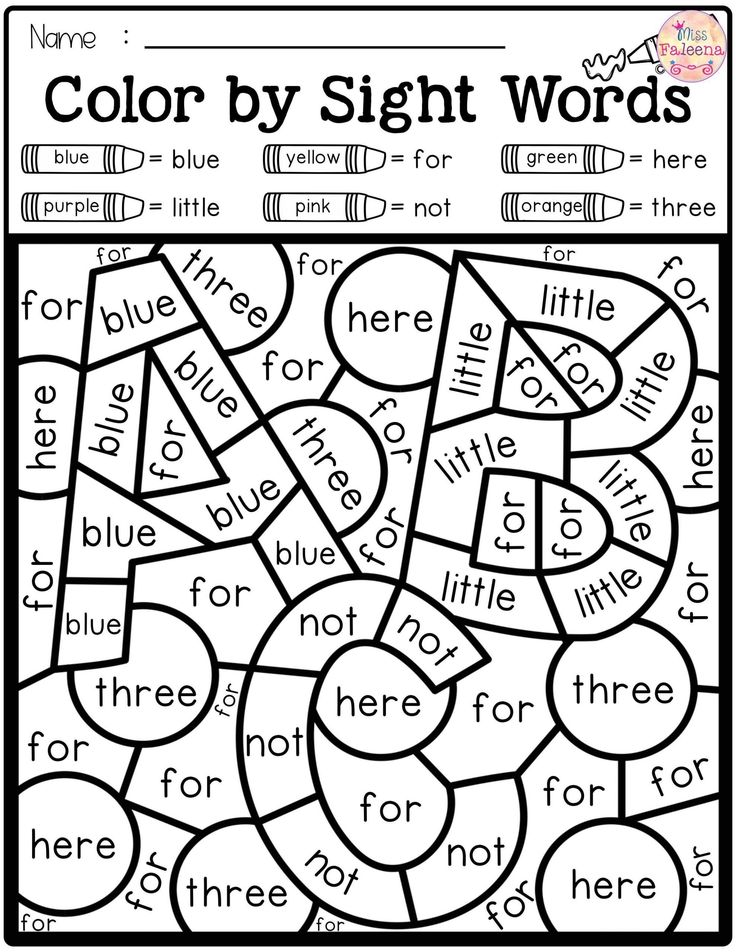
This is what concerns working with an open sight. Further about the diopter. And again we return to A.A. Yuryev’s “Sport Shooting” (Second Edition, Moscow, FiS, 1962):
“A diopter sight greatly facilitates and simplifies aiming, since the shooter is relieved of the need to see one of the three objects (sight slot) during shooting, which is closest to the eye, and therefore the most inconvenient for visual perception. nine0014
The role of the slot in the diopter sight is performed by a small round hole (diopter). When aiming, the shooter needs to look through it and see only two objects - the front sight and the target.
To aim with a diopter sight, the shooter, looking through the diopter hole with his right eye, brings the top of the rectangular front sight under the lower edge of the target "apple" or places the "apple" of the target in the center of the front sight ring.
nine0013 During aiming, the shooter should not particularly divert his attention to searching for the center of the diopter hole and aligning the top of the front sight with it; due to the sense of symmetry of the eyes, this work is able to perform automatically and involuntarily.
If the shooter makes an inaccuracy in determining the center of the hole and the location of the top of the front sight in it, and the line of sight turns out to be somewhat shifted to the side, there will be no big mistake in aiming, because the point of the diopter hole itself is relatively small. nine0014
Thus, in order to ensure accurate and uniform aiming with a diopter sight, the shooter must basically mobilize all his attention to correctly and uniformly position the top of the front sight relative to the aiming point, while carefully maintaining the same clearance.
Likewise, there are no secrets.
If we turn to foreign sources, for example, an analogue of our NSD - Field manual, we will find that it says about the same principles of a “smooth front sight”. nine0037
Figure 4-15. Correct sight alignment
RIFLE MARKSMANSHIP M16A1, M16A2/3, M16A4, AND M4 CARBINE (Change 4).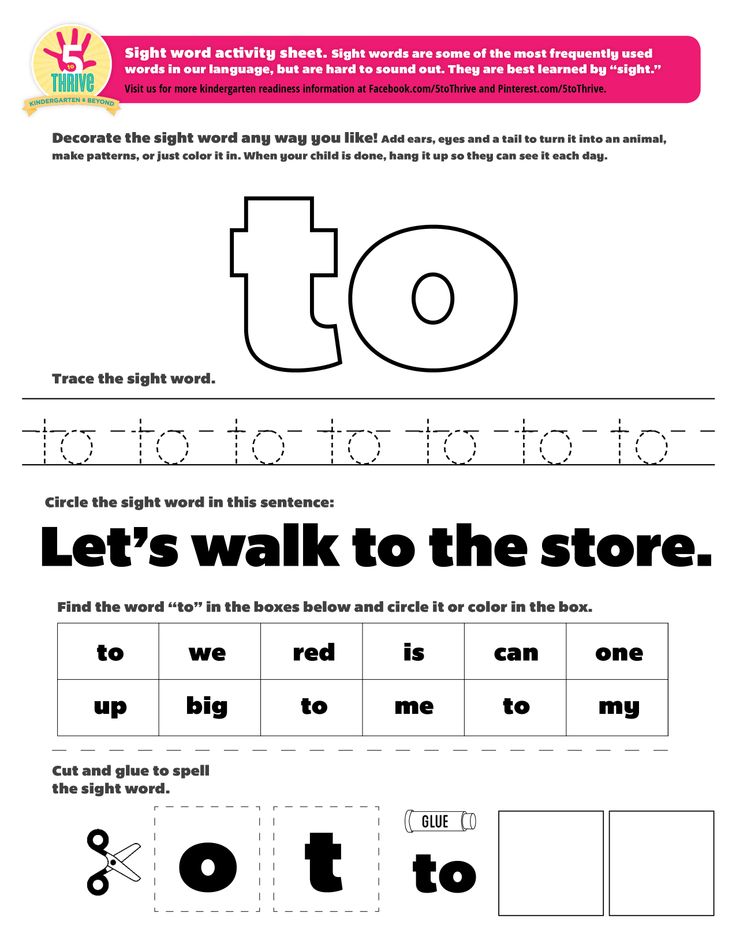 Washington: US Army, 2006.
Washington: US Army, 2006.
RIFLE MARKSMANSHIP M16-/M4-SERIES WEAPONS (Change 1). Washington, DC: HEADQUARTERS DEPARTMENT OF THE ARMY, 2011.
The referenced Field Manual FM3.22-9, although without much detail, mentions that the centering of the front sight in the rear sight hole ring, the eye is able to perform independently. nine0003
But in reality, many people have doubts, bordering on distrust, regarding the possibility of automatically centering the front sight in the diopter ring. The fact is that here we are hindered by stereotypes formed by the experience of working with "open mechanics". If you are shooting for the first time using a diopter sight, then instinctively you want to center the geometric center of the visible part of the front sight. We have already seen that this is not true, although, as discussed in the first article, a small shift will not lead to catastrophic consequences. nine0003
It must be remembered that the top of the front sight is located in the center of the rear sight hole, and not its geometric center.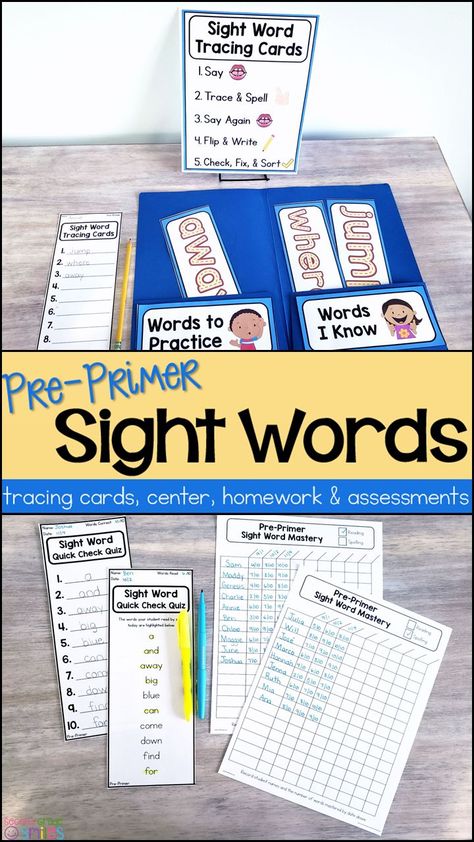 With the development of the skill, this error disappears rather quickly, and the eye puts the top of the front sight in the center of the rear sight ring. Let's look at this through the prism of the real conditions for the use of weapons.
With the development of the skill, this error disappears rather quickly, and the eye puts the top of the front sight in the center of the rear sight ring. Let's look at this through the prism of the real conditions for the use of weapons.
If you need to make an accurate shot, for example, at a distant small target, you can always take a fraction of a second to control the position of the top of the front sight in the diopter hole, while preparing a quality preparation for an accurate shot. And if you need to make a quick shot, your focus will be on the target, which you will automatically place in the center of the diopter, and small possible deviations of the front sight (which, by the way, is more clearly visible due to the effect of increasing the depth of field) from the center of the rear sight ring will not give a significant absolute deviation of the bullet from the aiming point, tk. if you needed to make a quick shot, then most likely the target is close and large-sized.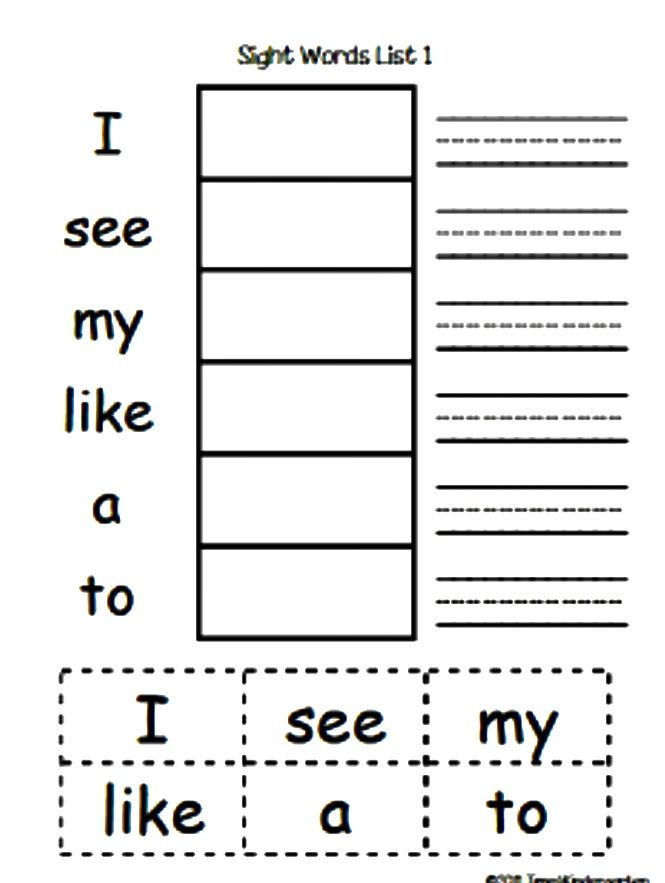 nine0003
nine0003
I would like to draw your attention to one more nuance from our NSD, namely, to the part where it is written “you need to close your left eye”! As is often the case in manuals, there is no description and explanation of why it is necessary to squint your eyes, since such documents are made according to the “read-do” principle and are aimed (or contribute) to simplifying the procedures for further copying to students. It can be assumed that in this way an attempt is made to increase control over the sighting image and the "smooth front sight" by cutting off half of the visual field or, which may be even more priority, an attempt to forcibly get rid of the problem of determining the "leading" eye. nine0003
And again we return to quotes from A.A. Yuryev’s “Sport Shooting” (Second Edition, Moscow, FIS, 1962):
shooters. Another disadvantage is that closing one eye is almost always accompanied by more or less tension in the muscles of the eyelids and pressure of the eyelid of the aiming eye on the eyeball; the latter affects the light-refracting apparatus and thereby negatively affects visual acuity.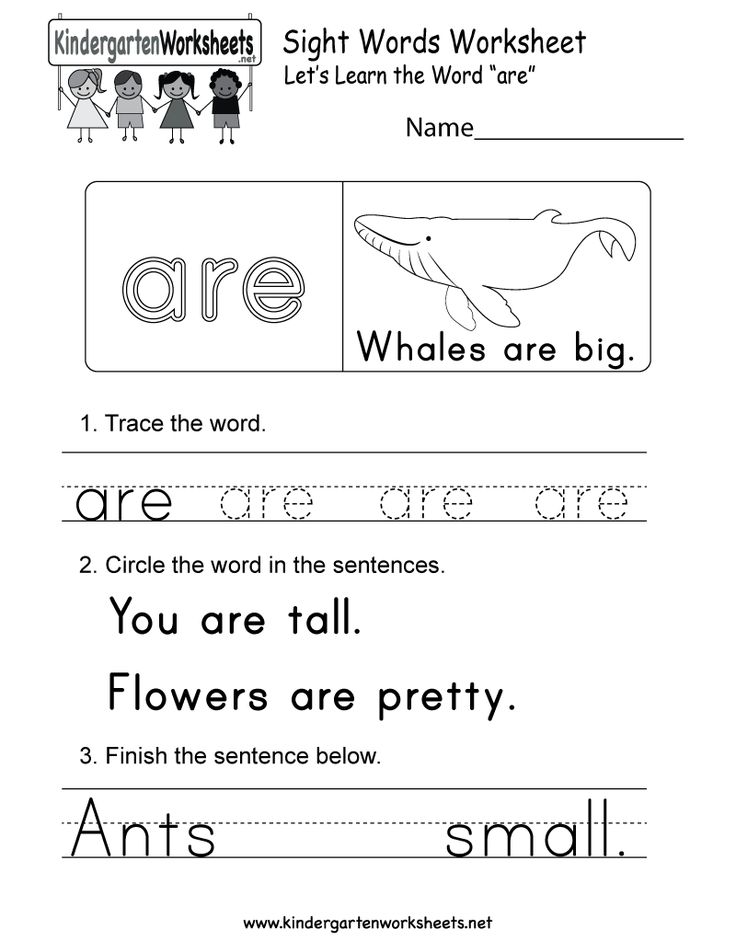 The third point that adversely affects the accuracy of shooting is the involuntary expansion of the pupil of the open eye in response to covering or closing the other. Based on this, it is best to turn off the second eye from the work not by physical means - by closing, but by psychological suppression of the visual impressions of the open, not aiming, left eye. nine0037
The third point that adversely affects the accuracy of shooting is the involuntary expansion of the pupil of the open eye in response to covering or closing the other. Based on this, it is best to turn off the second eye from the work not by physical means - by closing, but by psychological suppression of the visual impressions of the open, not aiming, left eye. nine0037
It follows from the text that closing one's eyes has many negative aspects.
To consciously suppress the perception of the picture by the “guided” eye, the following training method can be used: at the initial stage of mastering the aiming technique, the shooter closes his left eye, then learns to aim with both eyes, first slightly squinting his left eye to produce an accurate shot, then gradually opening his eye more and more , proceeds to shoot with both eyes open. In case of lack of time for full-fledged training, it is possible to use a simple algorithm in training the shooter: close your eye - level the front sight.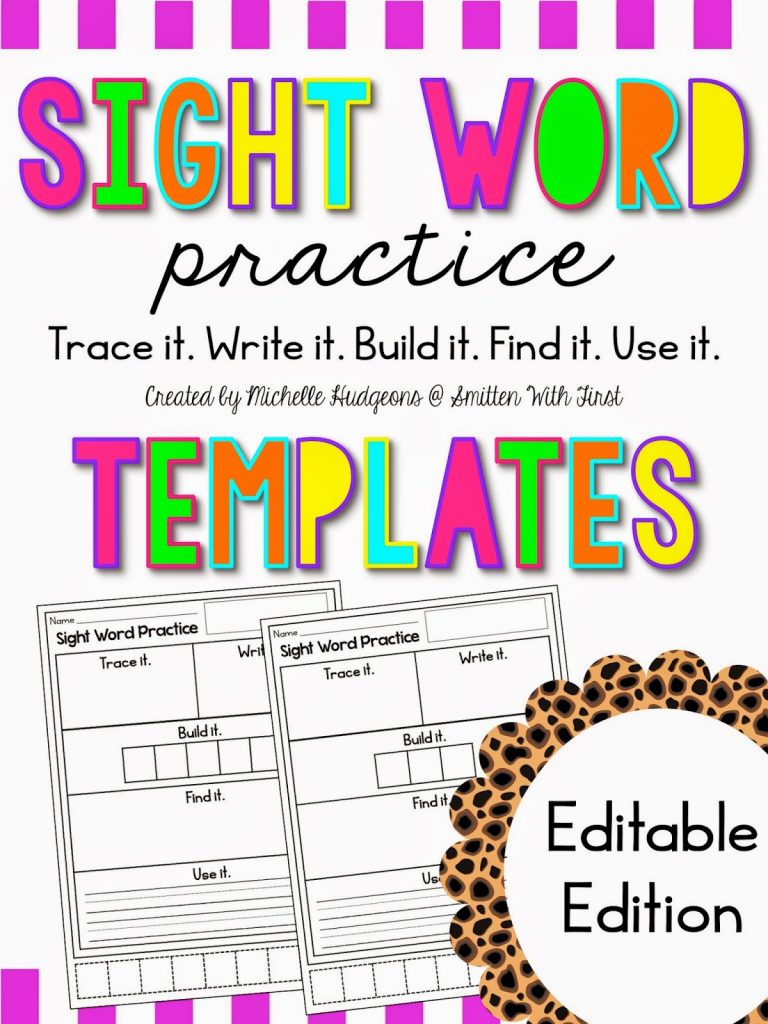 nine0003
nine0003
The described training methodology allows achieving a high quality of aiming in classical bullet shooting and, for example, in applied military exercises AK-3 and AK-4, and if other skills necessary for firing a shot are available at a high level, a high level of shooting accuracy.
And now let's move a little away from the mentioned conditions, when:
- the target is static;
- target contrast;
- target is well lit. nine0216
- skillfully fire at various targets in various combat conditions, both day and night, achieving the destruction of the target in the shortest possible time;
- observe the results of the fire and skillfully correct it. nine0211 "Continuously observe the battlefield"
If you close one eye while shooting, at least 30% of the field of view is cut off. Is it right to close your eyes in this case? The question is rhetorical.
"Skillfully shoot at all kinds of targets"
A properly trained shooter should be able to do this regardless of the type of sight on his weapon. Do not forget also about the ability to determine the distance to the target, as well as the removal of the aiming point in accordance with the excess of the trajectory, if necessary.
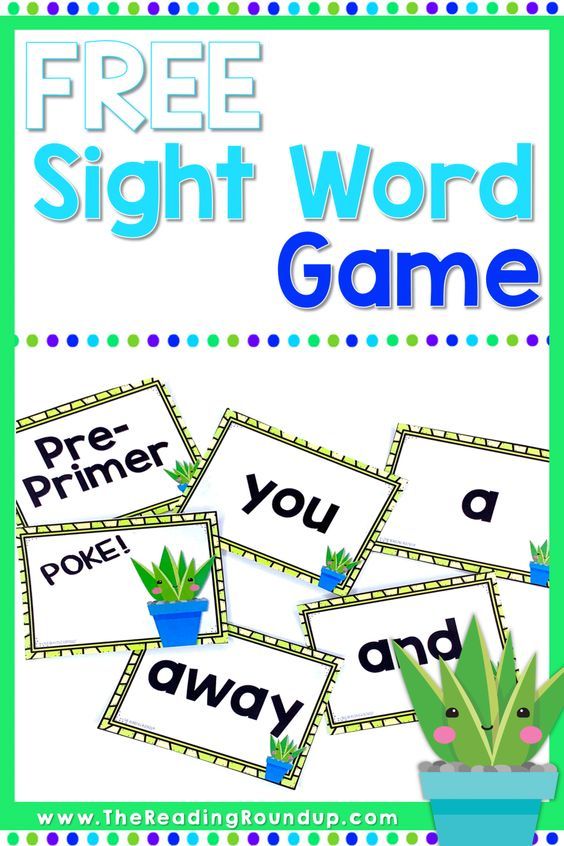 nine0003
nine0003 “Observe the results of the fire and skillfully correct it”
It is worth noting here that the manuals list specific methods of observation and evaluation: bursts of hits, bullet tracks and changes in the behavior of the enemy. front sight, the top of a clearly visible front sight on the target blur. If the paths of tracer bullets are more or less visible at the same time, then observing the bursts will require a shift in the gaze to the target and the space surrounding it. And how long will it take to transfer focus from the front sight to the target, for example, at 200 meters, and back? A second and a half? Plus or minus. nine0003
So it turns out - either the correct aiming picture, or a timely and, with a greater degree of probability, an effective shot.
Let's imagine a more realistic situation. The enemy in camouflage disguises himself in thickets and moves at the same time. How can you generally fire at such a target, focusing on the front sight, while observing the results of the shooting and adjusting it if necessary, if the target is already barely distinguishable and changes its position?
nine0037
The answer is simple - when using an open sight, aiming in accordance with the canonical rules from the textbook is often impossible.
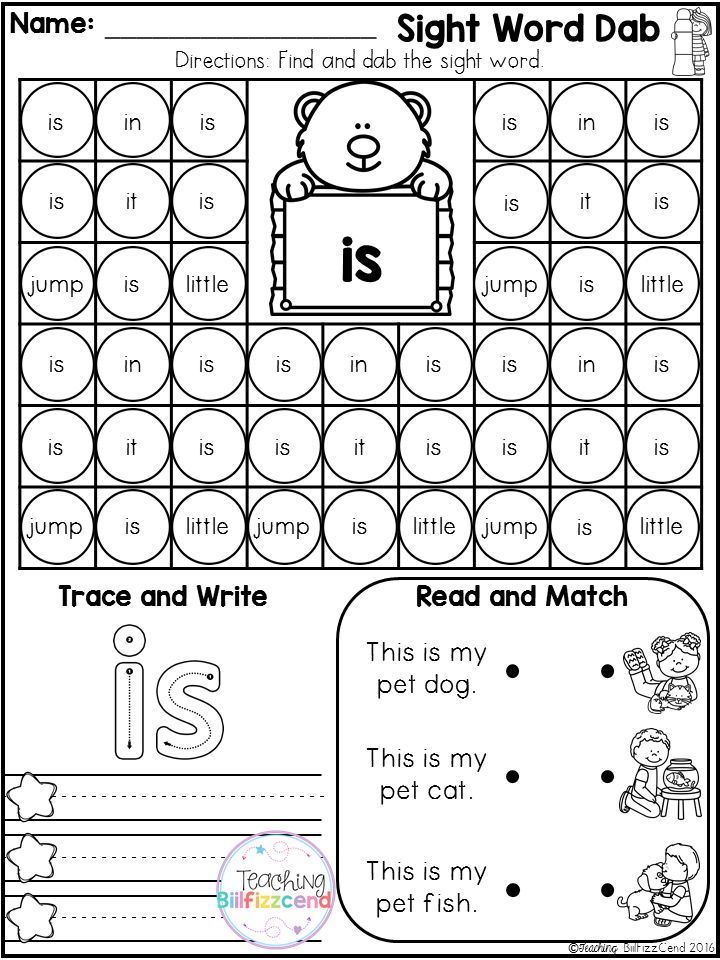 They shoot, sacrificing accuracy - focusing on the target with blurry front and rear sights. And with the advantages of a diopter sight, expressed in an increase in the depth of field and the absence of the need for perfect focusing on the front sight, aimed fire at a complex target merging with the background is real: tracks are visible (when using tracer bullets), bursts of hits are visible and enemy behavior is visible - remains on place, took cover or fell stricken. nine0003
They shoot, sacrificing accuracy - focusing on the target with blurry front and rear sights. And with the advantages of a diopter sight, expressed in an increase in the depth of field and the absence of the need for perfect focusing on the front sight, aimed fire at a complex target merging with the background is real: tracks are visible (when using tracer bullets), bursts of hits are visible and enemy behavior is visible - remains on place, took cover or fell stricken. nine0003 Do not forget also that when looking through an open sight, the shooter, maintaining a "smooth front sight", does not see the space below the level of its top. When looking through the rear sight, there is an observable field below the top of the front sight.
Why do dissatisfaction and denial arise among those who, having extensive experience in shooting with an open mechanical sight, tried to shoot with a diopter sight?
As a rule, everything lies in the wrong use. Shooters complain about the narrow field of view in the sight, about the rear sight itself, which blocks part of the view, that the front sight is “impossible” to center in the diopter ring.
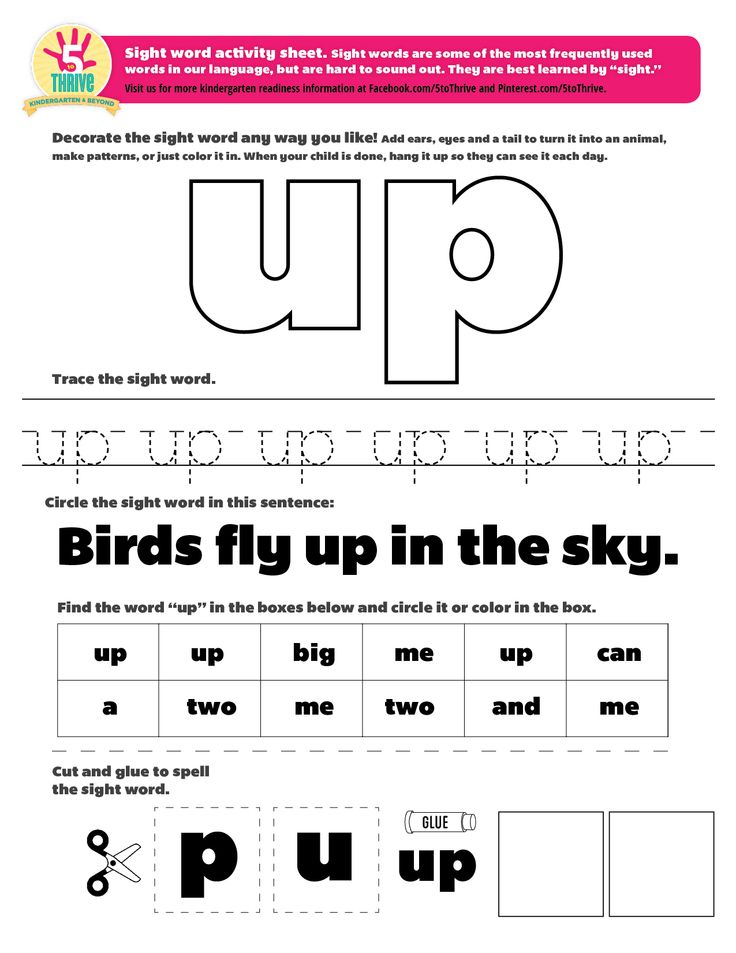 nine0003
nine0003 But, if you follow simple rules, which, unfortunately, are little known, then everything becomes much simpler and clearer.
First, position the eye at a distance of 4-8 cm. At this distance from the eye from the diopter hole, a balance is maintained between the angle of the field of view through the diopter hole and the ease of intuitively positioning the top of the front sight in the center of the hole. In this case, the rear sight ring blurs into a ghostly shadow and becomes almost invisible. A shooter who does not close his eyes when shooting cannot lose part of his field of vision at all, because the brain will supplement the entire missing picture from the right pupil with information from the left. The required distance from the diopter to the eye can be maintained either by correcting the manufacture, or by changing the length of the adjustable stock. By the way, it is not possible to install a diopter sight on any type of small arms, precisely because of the requirements for the distance to the eye.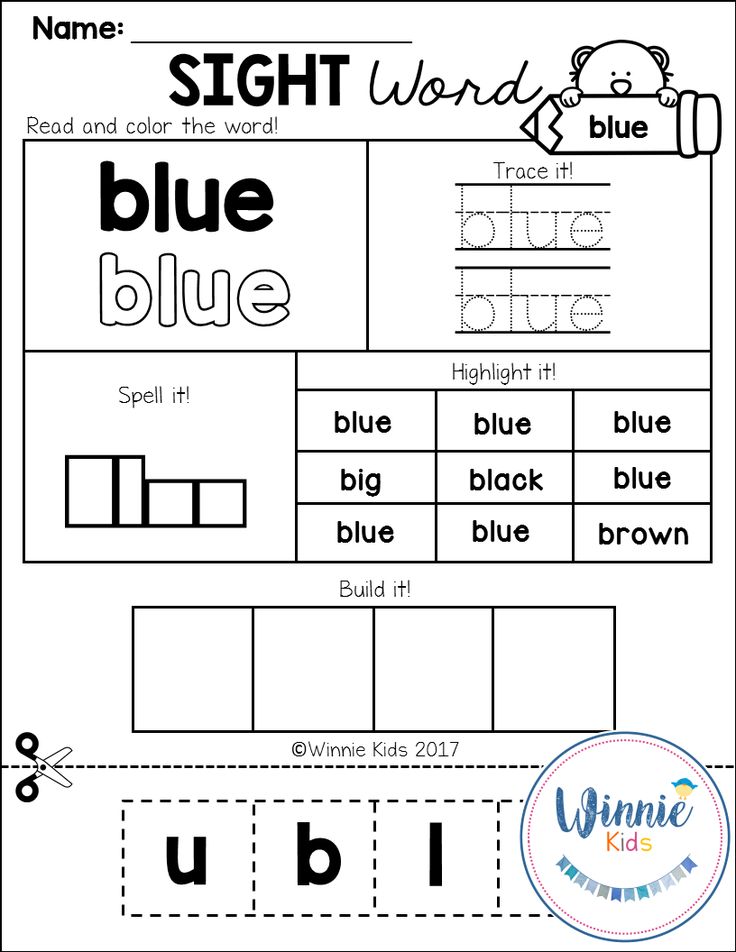 nine0003
nine0003 Secondly, if you have just started to master shooting using a diopter aiming device, you need to focus on the location of the upper cut of the front sight in the center of the diopter. In the future, to make any significant effort to center the top of the front sight in the rear sight ring, as already mentioned not only by me, but also quoted from, I’m not afraid of this word, the greatest work on teaching the technique of producing a well-aimed shot, there is practically no need - eye will do so involuntarily. The same thing was mentioned in the first article, when the ability of a diopter sight to reduce parallax was briefly described. You can read more about this effect in a recently published translation of a practical study on this topic. nine0003
Thirdly, the canonical rule "focus on the front sight." But, depending on the conditions, due to the increase in the depth of field of the depicted space, in order to achieve the goals of making a shot, it is possible to shift the focus of vision to the target without losing the quality of aiming.

And again, briefly about the rules of shooting using a diopter sight (after determining the range to the target, setting the sight and / or taking out the aiming point and forming the correct position, which will ensure the necessary removal of the eye from the sight): nine0003
- front sight focus;
- top of the front sight in the center of the diopter;
- the top of the front sight on the aiming point.
SUMMARY
ANY mechanical aiming device allows you to make an accurate shot, provided that the shooter is able to distinguish the target, it's just a matter of skill. But it is undeniable that different types of scopes have their own unique advantages and disadvantages.
The prevalence of the advantages of one type of sight over another in specific conditions of use and determine our choice of sighting device. And it is precisely for the correct understanding and high-quality use of sighting devices that appropriate competencies are needed.
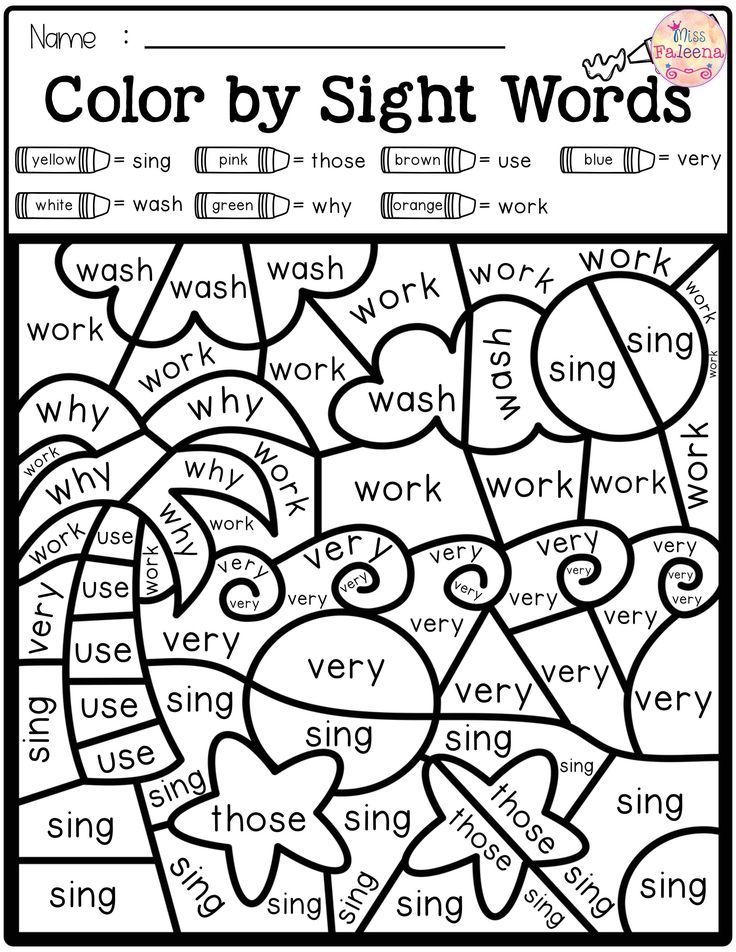 If you do not know how to use a microscope, then it turns out that a magnifying glass works better. nine0003 90,000 dentistry - Doctor Volkov
If you do not know how to use a microscope, then it turns out that a magnifying glass works better. nine0003 90,000 dentistry - Doctor Volkov We will help you help you
to find a beautiful and healthy smile
Patients are taken by high -classSpecialists
Comfort and quality
Materials of the new generation
Treatment without pain
Special approach to each patientBest Best in dentistry
3D technologies and smile design
Innovation at all stages of treatment
Excellent aesthetics and resultsthat will not disappoint you
Our Services
About clinic
What is this clinic?
Modern dental treatment facility. Competent, trained staff. The equipment of our clinic meets the requirements of the present day and allows us to do nothing to limit the possibilities of the Doctor and the wishes of the Patient.

What does the clinic do?
Doctor Volkov's practice provides dental care to people who need it. This means ANY help in three most important dental aspects: health - function - beauty (aka aesthetics). Prevention of possible dental diseases is the fourth and, perhaps, a priority aspect of the clinic's activities. To solve clinical problems, the dentists of our dental center are armed with all the best opportunities provided by modern science in the field of dentistry. There is no need to list the methods used in dentistry (periodontology, therapy, surgery, including implantology, orthopedics, orthodontics), there are too many of them - in our work we use only the best methods. There is no longer available. nine0003
Who works there?
A team of professionals, dentists of all specialties, led by Dr. Volkov. This doctor has been in service since 1987. In 97-99, he also received an American dental education. Member of the ADA (American Dental Association) since 1998, which allows him to rely on the standards adopted by it in his daily practice.
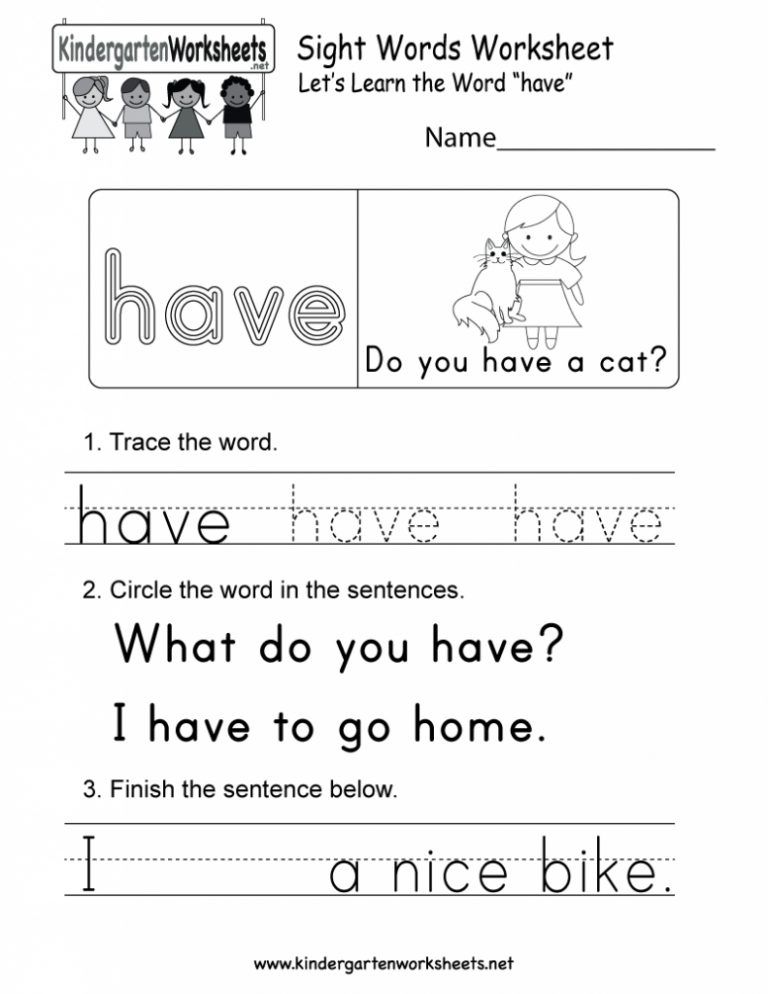
Who is being treated there?
For a long time in the dental clinic "Practice of Dr. Volkov" practically did not use advertising media or any kind of agitation. This circumstance forces the clinic team to approach the treatment process, realizing that only the opinion of people who have received the desired result will attract new dental patients. Here they treat those who ALREADY know HOW they treat here. Unfortunately, modern aesthetic dentistry is very expensive. Therefore, patients of the clinic have certain financial opportunities. nine0003
And what, everyone can do it?
Looks like it. But there are also limitations: this is the imagination (wishes, awareness) of the patient, the clinical possibility and the size of the budget. But in the first place for us is the wishes of the patient. Do not constrain yourself in dreams and they will come true!
Volkov Alexander Dmitrievich
Diplomas and certificates
nine0003
Dentist-therapist, dentist-orthopedist, dentist-surgeon
Lyubov Valerievna Avodkova
Diplomas and certificates
nine0003
Dentist-therapist, orthodontist
Nechiporuk Anton Vyacheslavovich
Diplomas and certificates
Chief physician, dentist-surgeon, orthopedic dentist
Danilova Olesya Gennadievna
Diplomas and certificates
Dentist-therapist
Alexander Minakov
Diplomas and certificates
Dentist-therapist
Oksana Chekmareva
Diplomas and certificates
Administrator
Skvorodina Ksenia Igorevna
Dental hygienist
Useful information
10.
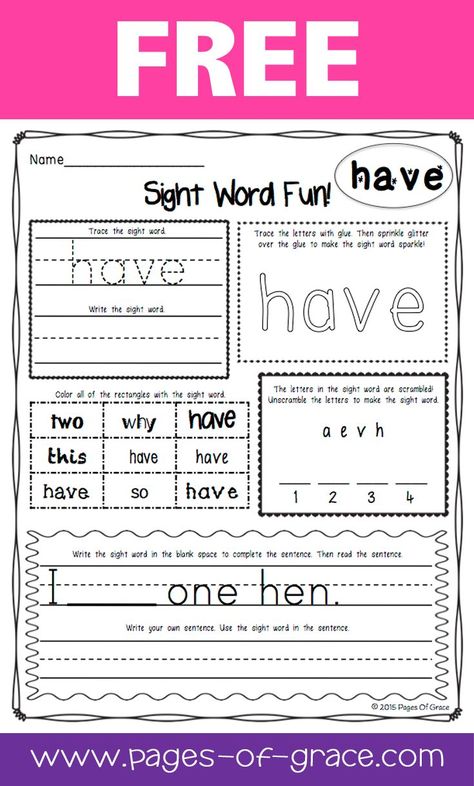
And consider, for example, the conditions for performing exercises according to the rules of the international confederation of practical shooting from a carbine in the open air.
A beige cardboard target against a sand bank or a white target against a snowy shooting range will have low contrast and may be poorly lit, such as side or contrast light. Under such conditions, keeping a "smooth front sight" and combining its top with a faintly distinguishable target will become a non-trivial task.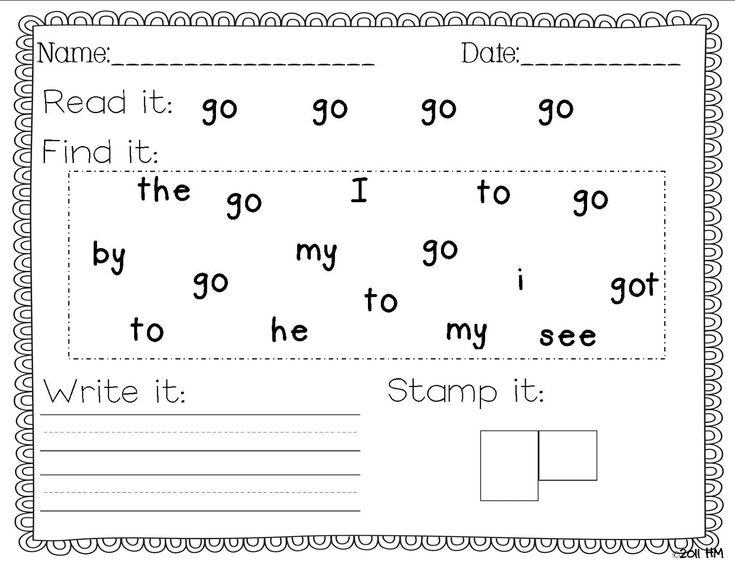 And in the case of using “focus on the front sight”, it will lead to the need for constant refocusing of the eye (accommodation) from the front sight to the target and back to clarify the correct aiming. nine0003
And in the case of using “focus on the front sight”, it will lead to the need for constant refocusing of the eye (accommodation) from the front sight to the target and back to clarify the correct aiming. nine0003
Or another situation: the bullet shooter knows for sure that it makes no sense to look at the target after the shot - black holes in the black "apple" of the target at 50/100/300 meters still cannot be seen. The practical shooter also knows not to look at cardboard targets. But, after shooting at a metal falling target - “popper”, even if the shooter is mentally able to make a good “mark” of the shot and the sound of a bullet hitting was heard, it is necessary to look at the target and make sure that the target has fallen. Otherwise, it will be considered unaffected. And here a diopter sight is more convenient than an open one - refocusing, if it is needed at all, is much easier and faster. nine0003
In these cases, the use of diopter sights makes it possible to significantly simplify these tasks: there is no need to level the front sight in the rear sight, as already mentioned in the quote from Sports Shooting - the eye performs this function involuntarily; increasing the depth of field makes aiming easier, there is no need for additional accommodation of the eye.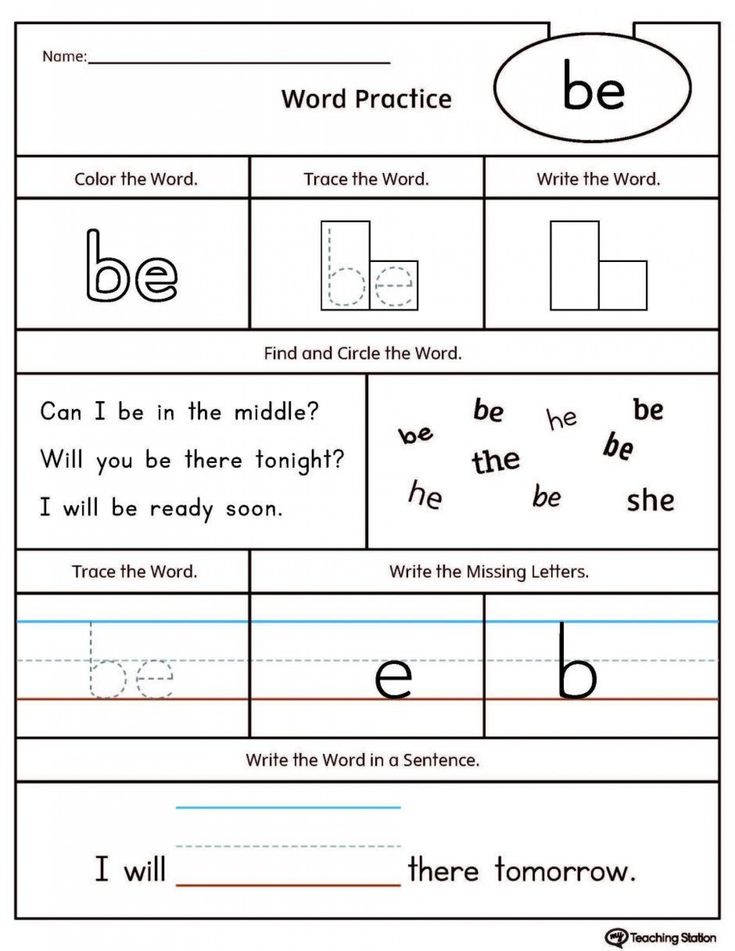 In a diopter sight, when focusing on the front sight, the “blurring” of the target is much less than when looking through an open sight. nine0003
In a diopter sight, when focusing on the front sight, the “blurring” of the target is much less than when looking through an open sight. nine0003
If we are guided by the contents of the manuals on shooting (NSD), then for the successful completion of tasks in battle, at a minimum, it is necessary:

